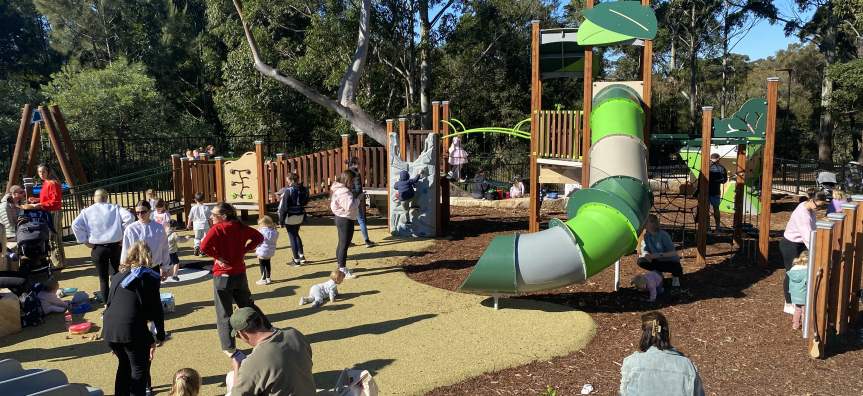Brick Pit Reserve has undergone a remarkable transformation, emerging as a natural oasis in Frenchs Forest.
One of the most striking features of the upgraded reserve is the elevated accessible loop boardwalk that winds through the rehabilitated landscape, allowing visitors to immerse themselves in the area's natural beauty while learning about its historical significance.
The boardwalk seamlessly connects pathways that lead to various amenities, including a newly designed playground.
The playground has been crafted with natural materials and elements to offer a diverse range of play equipment, such as swings, slides, climbing structures, and a nature play area.
By incorporating natural materials and elements, the design fosters a stimulating and inclusive environment where children of all ages and abilities can engage and explore.
Beyond the playground, the reserve boasts new picnic facilities, public amenities, and improved access pathways.
Funded by a grant from the NSW Department of Planning, Housing and Infrastructure (DPHI), the project is part of the broader Frenchs Forest Town Centre plan.
The upgraded reserve serves not only local residents but also hospital staff, patients, and the wider Northern Beaches community. The initiative represents a significant milestone in the ongoing efforts to create dynamic public areas that harmoniously blend with nature.
Residents and visitors alike are encouraged to explore the revitalised reserve and enjoy its array of features.
While the official opening is not until next week, we are pleased to see so many people already enjoying the new facilities. For additional details about the Brick Pit Reserve upgrade, visit Your Say Northern Beaches.
Brick Pit Reserve history
William and Hannah Hews and their three children were the first European settlers in Frenchs Forest, originally known as Rodborough.
William migrated to Australia with his parents in 1852 and worked in the construction industry before establishing a brickyard in Petersham.
In 1885, he bought 10 acres of land from James Henry French’s original Rodborough Farms subdivision, transferring his brickworks factory to land on the corner of Bantry Bay Road and what is today Warringah Road. He then moved there with his wife, children and about 40 workers.
Hews bricks used clay from the property and were handmade in molds and fired in kilns using timber from the nearby bush.
One worker could make 12 to 13 hundred bricks a day. The brickworks became one of the largest operations in the area, with bricks transported by horse and dray to Manly, Narrabeen and across the Spit. At the Spit they were loaded onto a punt and shipped to Mosman and the city.
The Hews family and their workers had quite a set up. Slab huts and cottages were built nearby for employees and their families. On the Hews’ property was a tennis court, a cricket oval complete with a pavilion and a flower garden. Cricket teams travelled from all over Sydney to play here and it was a social hub.
William Hews was elected to the first Warringah Shire Council in 1906 and served as Shire President in 1912. He was well liked and often referred to as ‘King Billy”. William died in 1917, aged 73 years.
The brickworks stopped production during World War I when the clay ran out.
The land remained in private ownership for many years. Part of it was used for the Wakehurst Parkway in 1948, and much of the remainder was bought in the 1960s by the Warringah Shire Council for use as a public reserve.



